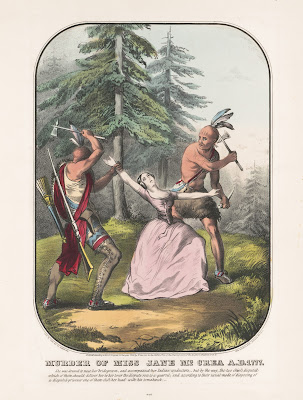Leaving Worcester County - "To Northborough and Halted"
On November 4, 1777, the Convention Army was only days away from Boston. A listing of their overnight stops makes it clear that British and German troops traveled on separate routes from New York through western Massachusetts and on past the Connecticut River, until they reached Worcester County; and that within each column the troops were spread out over many miles, with elements passing through or stopping in several towns on the same day.
Most of the British column would leave Worcester County on the 4th, after having spent the night in Shrewsbury or Northborough. "We marched to Northborough..." wrote Massachusetts Militia Lieutenant Israel Bartlett on the 3rd. [1] "[A]t Night We Staid at Northberry [Northborough]" noted Private David How. [2] The remainder of the British troops were a day behind, and perhaps to avoid having to share the road and its resources with the German column, some appear to have left the common route of march on an offshoot that took them to Westborough rather than Northborough, then on through Framingham and the southern part of Weston before rejoining the rest of the column. [3]
The march into Northborough, from Main Street in Shrewsbury, would follow the Post Road which is joined by and becomes present-day Route 20 a little over a mile from the center of town. Doing so, they would pass what is one of the oldest homes in Northborough today, at 455 Main Street, begun in 1711, and just past the center of town, the home of Militia Captain Samuel Wood Jr., at 97 Main Street, built by his father in 1749. Both are privately owned and not open to the public.
On the east edge of town, right before the Marlborough line, are two markers that note the killing of Mary Goodnow (also spelled as "Goodenow") by Native warriors on August 18, 1707. Likely this was unknown to those who passed in 1777, though the stories of this nature had been a part of the campaign, such as the killing of Jane McCrea by Native allies of the British on July 27, 1777, at Fort Edward, New York, dramatically pictured in an 1846 print from the Library of Congress.
The 1707 attack on Northborough, thirty years after the Native uprising referred to as "King Phillip's War" had devastated settlements in the area, was a raid attributed to "French Indians", warriors from tribes in Canada operating at the behest of the leaders of what was then a French colony. Massachusetts received warning from New York governor Peter Schuyler, great-uncle of Brigadier-General Philip Schuyler, but his letter dated August 11, 1707, likely was too late a warning to have reached the Goodenow family in Northborough. [4]
The Germans marched into neighboring Middlesex County on the 5th, but remained on the Post Road. As shared previously, they noted little about that day or the towns they passed through. Joshua Pillsbury, with their escort from the Massachusetts Militia, recorded their march took them from Worcester through "... Shrewsbury and Northboro to Marlborough 23 [miles]." [5] The Germans themselves noted likewise only the towns they passed through and how many miles they marched, or with Brunswick Grenadier Johann Bense, simply that they were quartered in Worcester on the 4th, and Marlborough on the 5th. [6]
Northborough had become a town in its own right in 1766. Previously, it had been a part of Westborough, to its south. Westborough had been a part of Marlborough, to its northeast, until 1717. Marlborough had been settled in 1660, upon the petition of a number of families who homes were west of the boundaries of Sudbury, which had been incorporated in 1638, as the Massachusetts Bay Colony expanded outward from Boston. [7] Since its founding in 1906, the Northborough Historical Society has worked to preserve and share the town's history. Today it holds monthly meetings, operates a museum, and maintains a robust website that includes copies of past newsletters and among other resources, a list of historically themed hikes around town.
I searched though the Society's past newsletters and was pleased to find that two mention the march of the Convention Army. The first is a good example of the problem of the use of a single source. It questioned the memories of a resident who, though four at the time, recalled in 1847 that seventy years earlier Lieutenant-General John Burgoyne's army had stopped in Northborough on November 2nd, and some of his soldiers had stayed in his family's house, outbuildings and barn. A 2013 newsletter article questioned this account based on the Specht Journal, which indicates the Germans stayed in Worcester and not Northborough on the 2nd, and marched through Northborough to Marlborough on November 5th.
A 2022 newsletter article corrected the record - somewhat. The 2022 article quoted from Lieutenant Bartlett diary entry to support Henry Gassett's 1847 claim that elements of the Convention Army stayed overnight in Northborough. However, the 2022 article continued on to raise the question of where British troops camped, based on a letter from 1969. That letter, written by another member of the Society, suggested that it may have been just outside of town in Westborough, as supposedly a British uniform had been found at some point when a fireplace in an old house was opened or repaired.
The 2022 article also repeats the story that some of the Convention Army marched through Connecticut on their way to Cambridge. While the Convention Army did march through Connecticut in 1778, those who passed through the state in 1777 were taken before the surrender at Saratoga as prisoners of war, perhaps at the Battle of Bennington - a topic for next week, following the 246th anniversary of the battle on Wednesday, August 16th.




Comments
Post a Comment